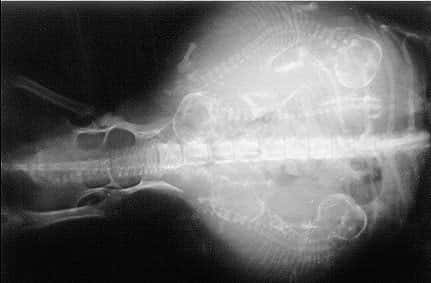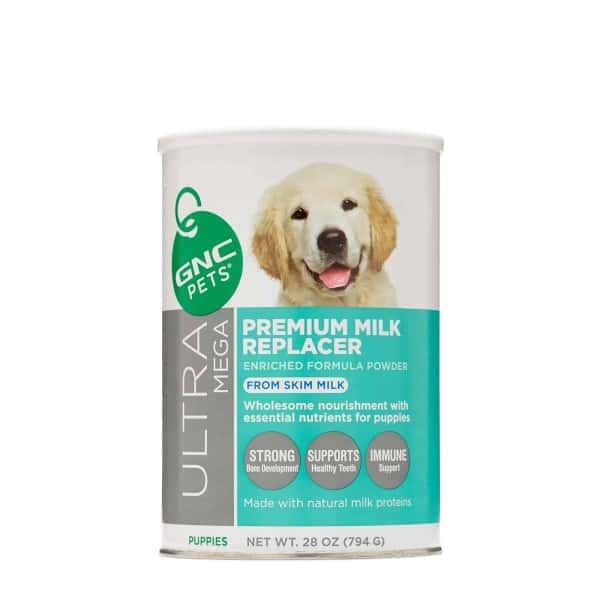French Bulldog Whelping 101 | Ethical Kennel
Learn the process behind how the breeding and pregnancy process works for French Bulldogs and their puppies.
Before you start breeding your French Bulldog you should educate yourself as much as possible. Do research on genetics, take courses, etc. After all that re-think if this is something you want to do, because it’s a lot of work.
If you are here, after an accidental breeding happened and you are low on time and knowledge, we will try to help you out as much as possible with this article. Keep reading.
Before Birth
French Bulldog pregnancy lasts from 58-63 days. You will be able to confirm the pregnancy with an ultra-sound after 30 days. So make the appointment with your local vet as soon as possible. However you won’t be able to know how many puppies are in there until the 50th day when the little bones mineralize (you will be able to confirm that with an X-ray). The price of the ultra sound and X-ray really depends from city to city.

Right after you confirmed your French Bulldog is pregnant, switch her to a high quality puppy food. Puppy food contains more nutrients than the adult food, which are crucial for the development of the babies. By the 5th week she should be consuming 20-30% more food than pre-pregnancy. Deworm your dam, so you prevent her from infecting the puppies at birth. Let your vet recommend a product that is safe for a pregnant dog.
By the 6th week introduce smaller portions 3,4, maybe even 5 times per day. Her babies are growing and the amount of space in her belly is getting smaller by the day. Don’t add any calcium supplements at any stage of the pregnancy.
This is also the time to get the whelping pen ready, and make sure she is used to it and feels comfortable in it, since she will spend a substantial amount of time there in the next few weeks.
The amount of food should be gradually increasing until she whelps. On the 8th week she should be eating 50% more than pre-gestation.
The Labor
After the 50th day you should start consistently measuring her rectal temperature. Every day, same time, keep notes. When her temperature drops below 100 degrees, that’s a sign she will be going into labor in the next 24 hours. Other behavioral patterns will also give it away, like restlessness, nesting, panting, lack of appetite. She might refuse to eat and drink at all, so don’t try to force it.
At that point it’s time to take her in for a C-section, or if you are free-whelping, it’s time you double check your list of supplies to make sure you have everything you need. Don’t free whelp unless you are an experienced breeder and the X-Ray confirms the size of puppies heads will actually fit through the birth canal.
Whelping 101 Kit:
- Whelping box, located in a quiet part of the house. You can buy one online or build one yourself. If you are in a hurry you can take a kid’s pool and lay down news paper, because there will be a lot of fluids during the labor process, and newspaper is easy to switch when soaked.
- A heating lamp or heating pad. Puppies can’t regulate their temperature. They need to be kept warm at all times, but also need a space to crawl to if they get too warm.
- Digital thermometer. Make sure the room temperature or the whelping area temperature is above 80 degrees at all times.
- Hand sanitizer. Don’t touch or intervene in any way with dirty hands.
- Surgical scissors, to cut the umbilical cord, if the mom doesn’t do it herself. And also to intervene with opening up the sacks if she is not doing it fast enough.
- Towels. You can warm them up in the drier and use them to dry up and warm up the puppy before placing them under the heating lamp.
- Suction bulb, you can order this one or get one from Walmart. This is very important. You will use it to suck any fluids out of the puppies lungs and nose. Sometimes puppies can’t take their breath and die, due to liquids in their lungs.
- Puppy feeding bottles. You will need them to supplement the puppies in case of a big litter or if the mom isn’t producing milk for some reason.
- Puppy feeding formula. We recommend using the GNC Goat milk one.
- A scale. You will be measuring their weight from birth on, every day, no excuses. You have to make sure all the puppies are gaining.
- Thermometer. You need to measure their temperature daily for the first 10 days and make sure it doesn’t drop under 98 degrees.
- Lots of blankets. You will be switching blankets several times per day. You have to keep the whelping box clean at all times.
- Baby wipes. There will be a lot of mess. Use gentle baby wipes to clean the pups up.


Week 1
- Weight the puppies and take their temperature daily. Make sure it doesn’t drop below 97 degrees. They can’t regulate their temperature and getting cold can result in death.
- Feed them every 2 hours. It would be helpful if you have someone to assist you, or you will end up being a walking zombie. Puppies need to be fed every 2 hours for the first 10 days of their life.
- Make sure they are all pooping and peeing. They can’t do it on their own so the mom will stimulate them by licking. If she refuses to do it, you will have to jump in. Take a warm cloth and massage the area under their anus until they start urinating/defecating.



- It’s important to make sure they are pooping and don’t get bloated. The pressure from the bloat can damage their internal organs. If you see a puppy that is fussy, looks bloated and isn’t pooping after every meal chances are the pup is constipated. But don’t freak out. Take a syringe with 5ml of luke warm distilled water and slowly squirt it up their anus. Wait 30 seconds and start massaging with a warm cloth until they poop.
- If you are supplementing them don’t over feed. Follow the instruction on the puppy formula.
- Make sure the puppies don’t aspirate milk. If you see milk coming out of their nose, use the sucking bulb to remove it.
- Around day 5 puppies front legs will be strong enough to start crawling towards their mothers teats. They can recognize and take a preference for a certain teat by the smell.
Observe the mom, don’t forget she still has to follow the increased food regime, since she is producing milk for several puppies. You can start supplementing her with Raw Goat milk, to increase calcium intake after birth.

Week 2
Puppies should be gaining weight daily. They are regulating their own temperature and also slowly opening their eyes and ears. They will be reacting to sounds and will start recognizing their mom, siblings and yourself. You will also notice they are testing their voice by doing “scary” growls, barks and whines. Don’t expose them to flash or a very bright light, since their eyes are technically still developing and very sensitive. Start trimming puppy nails. I just use human trimmers at that point, since the nails are soft and tiny. It’s important to trim them regularly so they don’t make the dam uncomfortable while nursing. I swear puppy nails are murder weapons.
You may not be aware but almost all puppies are born with some kind of worms, usually transmitted from their mother. At 2 weeks old it’s time to start the deworming process. Use something puppy friendly like Sentry HC Worm Liquid. It doesn’t taste good, so mix it in with puppy formula and feed with a syringe. Repeat the process every week until 12 weeks of age.
Week 3
At week 3 your French Bulldog puppies will start taking their first steps. They will now be able to use their hearing and vision for exploration. Make sure to remove any unwanted objects they could ingest or nibble on. Around the 22nd day the “licking” reflex will start to appear, as well as will their first teeth. The nursing process is going to become more and more uncomfortable for the mother and that is where the next big step comes in.
Time to introduce the pups to food and water. Create the “puppy mush” by soaking kibble in hot water or mixing it in the blender + adding the puppy formula. Offer it several times per day. If your litter is big use a baking sheet and place the mush on it to make it easily accessible to all of them. They will still nurse, as much as the mother lets them. Don’t forget to deworm and trim their nails.
Week 4-5
Puppies are actively exploring their surroundings and interacting with their siblings. Their senses are now fully developed. Interaction with their mother is still essential during this period; through play, she will start to guide them in how to behave appropriately. In short, the dam will communicate with them and teach them.
You can introduce different types of stimulatio , from toys, to TV sounds, kids, unusual sounds, people picking them up and playing with them, etc. The experiences that French Bulldog puppies encounter during this phase are crucial, as they will be locked into their memory and will always appear ‘familiar’ to them. If socialization is poorly accomplished, this could create fear and inappropriate behavioral responses later in life.
Week 6
In contrast to their earlier readiness to explore, around week 6-8 puppies will begin to withdraw, appearing more reserved when faced with new and unfamiliar experiences. Puppies should continue to be offered as many stimulating socialization opportunities as possible, yet everything new must now be introduced with greater care. Failure to do so could make the puppies frightened, which is highly undesirable. If your child is handling puppies make sure they are informed and as gentle as possible, not just physically but also vocally.
Week 7-8
The mother now pays less attention to her young, allowing them to suckle less and less. This development in maternal behavior is quite normal. The puppies have now reached an age where they no longer need their mother’s milk. Nevertheless, the dam will continue in her role of teacher, deciding when and where to intervene and stop play.
Week 8 is also the time to take a trip to the vets office for their overall vet check to make sure they are growing, healthy and parasite free. Puppies will receive their first set of vaccines. Your vet will be able to advise on the vaccination schedule to follow. Just as for the primary vaccinations, it is important not to miss the dates for your dog’s annual boosters.
WHAT TO DO IF A PUPPY IS BORN UNRESPONSIVE?
Don’t give up on the puppy just yet. Sometimes they need plenty of stimulation to get them going. Start by using the sucking bulb to make sure no liquid is preventing them from taking a breath. Cover their mouth and nose with your mouth and start performing CPR on the pup. Place the puppy in a warm blanket/towel and rub to warm him up. Don’t be gentle. Try pinching the puppy several times to get a response out of him. Do that for an hour. If there is no improvement it’s time to let him go and focus on the living ones.